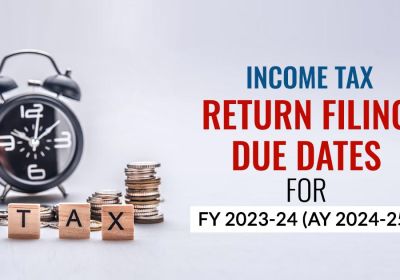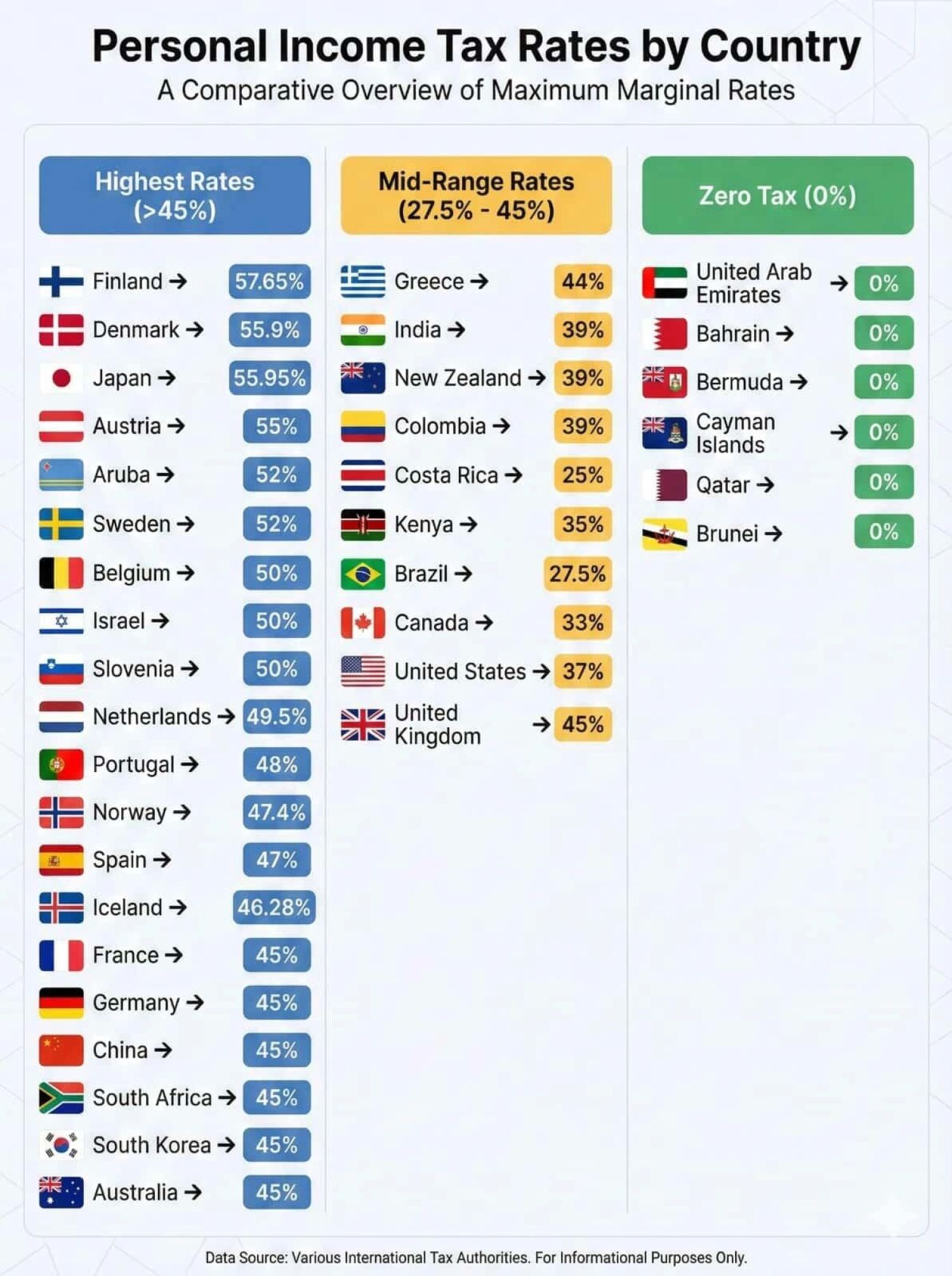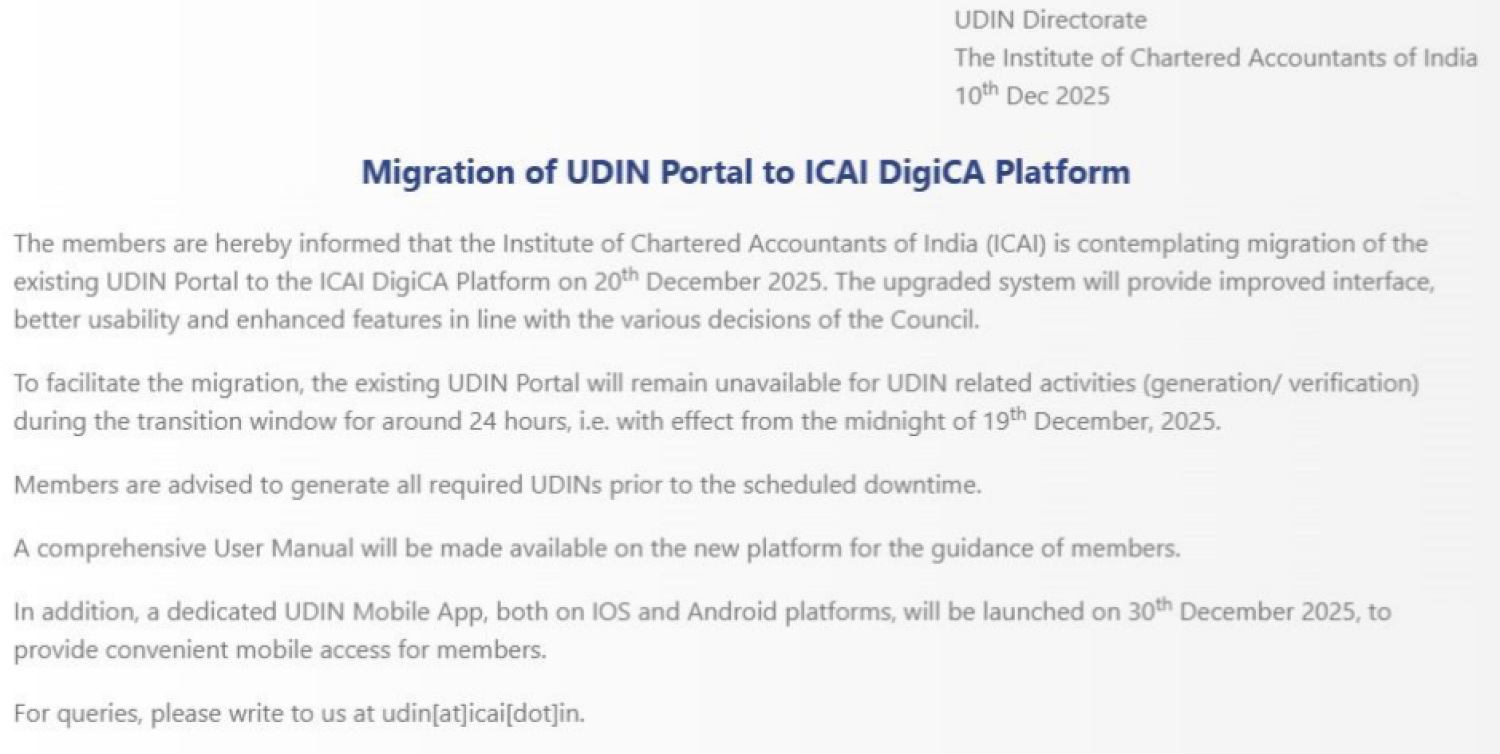Table of Contents
- The Neutral Tax Imposed On Business Decision-making
- Impact On The Stock Transfers
- Revision In Prices Of Goods And Services
- Uniform Structure, Design And Compliance System
- Changes In The Tax Rate
- Impact Of Gst On Working Capital Requirement-
- Changed System Of Input Tax Credit
- Cash Flow Benefits
- No Overlapping Of Vat And Service Tax
- Re-designing Of Business Procurement Models
- Training
- Impact Of Gst On Specific Industries
- Agriculture
- Works Contractors
- Gst Impact: Energy Sector / Power Sector
- Impact Of Goods And Services Tax on Telecom Industry/ Telecommunication Sector
- Intangibles
- Impact Of Gst On Land And Real Estate Industry
- Impact Of Gst On Importers And Exporters - International Trade
- Exempt Units
- Petroleum, Liquor, Tobacco To Be Outside The Ambit Of Gst
- Service Provider
- Gst Impact On The Tea Industry
- Impact Of Gst On Textile Industry
- Gst Impact On The Manufacturing Sector
- Impact Of Gst On The Pharmaceutical Sector
- Gst Impact On E-commerce Sector
- Gst Impact On Logistics Business
- Gst Impact On Automobile Sector
- Impact Of Gst On Tourism Industry
- Expectations Of The Industry From The Gst

One of the most emerging taxes of the future that is added on consumption goods and value-added basis is the Goods and Services Tax (GST). From now one cannot distinguish between the ‘Dual GST’ that is going to be imposed on goods and services. The tax will be levied by both the Central and the State governments. There will be some exceptions only when the GST tax would not be levied. Otherwise, everyone would be required to pay the tax. It will include all types of businessmen. They might include the manufacturer, job worker, trader, importer, exporter, and all other types of service providers. The companies which have numerous branches will be required to pay the tax levied on each of the branches. None can escape paying the tax and all the branches will be considered as taxpayers under the jurisdiction of the State Government. This process is carried out because it will contribute to building a more transparent and corrupt-free tax administration. This is why it has a huge demand in the industrial sector and it will definitely fulfil the purpose of the industry because it is a robust and streamlined indirect way of tax. If the GST is implied effectively, it will surely serve the administration in a positive way and the whole industry and the economy as a whole will develop. Broadly, GST is expected to impact in the following ways:
Overall Impacts Of GST:
-
The neutral tax imposed on business decision-making
Being a tax on consumption, the GST will be passing through all the stages of production and distribution. This, in turn, will lead to business decision making to be tax neutral.
-
Impact on the stock transfers
Taxation of the stock transfer will be effective only when the prepayment of tax on output is required. This, in turn, will primarily have an impact on the working capital requirements. Presently the stock transfers from one state to another or to one branch or consignment agent might be treated as an interstate sale. Depending on the stock turnaround time in the warehouse, credit cycle to the customer, quantum of stock transfer etc there will be a variation in the quantum of impact. It will also affect the stock transfers to branches/ consignment agents existing within the state. Presently the treatment of these transactions varies according to the laws and regulations of various states. The GST is likely to be affected if the dealer who is transferring any goods or services from one branch in a state to the other branch in the same state does not have the same BIN. BIN is the Business Identification Number which acts as an important factor. Therefore in cases where the BIN of the transferor and the transferee differ these transfers might be subjected to tax.
-
Revision in prices of goods and services
The fixation of the price is acritical factor in the development of any business. After having a definite knowledge about the operational impact of GST and also the finality of the rate structure, the fixation of the price will become relatively easy. The current pricing system needs to be deciphered properly. Only then it will be possible to gauge the component of tax built into the cost and price of products and services. You need to collect data both from outside and inside the organization to find the data accurately. In cases of the organizers, who are able to restructure their prices early have the advantage of becoming the first player in this highly competitive market. It will lead to the reduction of prices in the commodity in the long run. This is because the manufacturers and the distributors would pass the benefits of the lower cost of carrying out their business.
Uniform Structure, Design And Compliance System
Being dual in nature, the proposed GST would be able to envisage a uniform tax structure, design and compliance system. This is received at all levels of government and across all states. As a result, there is a reduction in the cost of carrying out a business in India. The differences in the Tax Structure of different states and the central government increase greatly. However, this would not be the case now.
Changes In The Tax Rate
The cumulative rate of tax on goods is 20-22 percent approximately under the current tax regime. It includes goods both at the centre and the state. However, presently the tax rate is 25%- 30%. It was 18%- 20% before the introduction of the GST. There has been a net gain of 6%- 10%. In cases of strong demand elasticity, there could be strong consumer resistance. It depends on the quantity which is passed or absorbed which is likely to affect the performance of service sector companies. As a result, most of the dealers would experience a wide difference in the rates of tax which would occur significantly. Hence a detailed study is required to carefully analyze the changed scenario.
Impact Of GST On Working Capital Requirement-
Excluding the cost of taxes, the GST has a great impact on the requirements for the cash flow of business. It is likely to show better prominence in cases of the transaction which involves the supply of goods and services. The working capital could be blocked due to the contingencies that might arise because of the impact of GST through definite and proper planning. For all these reasons, it is important to adequately plan the requirements of the working capital.
Changed System Of Input Tax Credit
This feature provides us with the provision of full input tax credit across goods and services and the collection of tax on the value which is added at each stage so that full tax is borne by the final consumer. In this way, it is ensured that the tax is always a pass thorough and it is separated from the actual cost of the product. This is why there will be a positive contribution by the GST. Not only does the GST help in facilitating seamless credit across the entire supply chain and across all other states but also exist as a current framework that allows limited inter levy credit between the Excise Duty and the Service Tax. Presently, there is a non-availability of tax credit and the VAT which is paid on input is also payable on the output. In this way, the introduction of the GST is able to rationalize the content of tax in the price of the product. This, in turn, will ultimately be beneficial to the consumer. The seamless credit received is greatly beneficial to the government which comes along with the bottom-line of the business. As a result, it greatly helps in building the self-policing feature and tax evasion will occur.
There is also a notable impact on Capital Goods that discourages savings and investment. In the process, it causes the degradation of productivity. In this way, the flawless GST helps to envisage the full and immediate credit for GST on the capital goods. These goods include both buildings and plant machinery. Hence, it helps to fulfil the requirement of eliminating the incidence of any indirect tax on capital goods. Enhancement of the productivity of capital is hence received that reduces the Capital-Output ratio.
Cash Flow Benefits
Cash flow benefits will be effectively offered by the GST. They provide them to the dealers and the distributors which greatly help to collect GST from their customers as they make sales. These would require remission by the government at the end of the month or the quarter when the returns are filed. The extra flow of cash would allow them to receive a scale and also invest in making operations all the more efficient.
No Overlapping Of VAT and Service Tax
There have been numerous cases where both VAT and the Service tax have been applicable. There has also been an overlapping of the taxes in some cases. For example, in air-conditioned restaurants, the Service tax imposed by the Central Government is to be paid only on 40% of the total bill. There are some food items in which VAT is applicable. This is because the food items are prepared to add some value. The VAT is seen to vary from state to state. This is why it is charged at high prices rather than 60%. The intangible items also suffer and the VAT, as well as the Service tax, is redefined. The issue could be systematically resolved in GST. In this way, there will be a reduction in the litigation system.
Re-Designing Of Business Procurement Models
It is necessary for the industries to learn the re-designing of business procurement models which help to optimize the outgo of tax. The up-gradation of software and the introduction of GST and the dealers and service provider need to be upgraded for the accounting and tax. Therefore, it is necessary to seek a trained person to operate this system. The large companies by using sophisticated software such as the SAP etc help to raise a challenge to the software companies to upgrade and customize the same.
Training
To reach development, competent professionals need to be employed and training should be given to the staff members at every level in order to teach them to handle the complex GST matter. The GST matters are a combination of various indirect taxes that are prevalent presently. Therefore, adequate training is necessary for all departments of marketing, accounting etc.
Impact Of GST On Specific Industries
Agriculture
The major issue of concern in the application of GST in the food industry is its impact on those living at or below the level of subsistence. The tax imposed on food would negatively affect the life of the poor making their lives all the more miserable. Exemption of tax on food would significantly shrink the tax base.
There are a lot of food items which include grain and cereals, meat, fish, poultry and dairy products, fruits and vegetables, candy and confectionary, snacks and items which are prepared for consumption at home, restaurant meals, and beverages. The food items in India are exempted from CENVAT. But there are some food grains and cereals which greatly attract the state VAT at a 4% rate. The unprocessed food items like fresh fruits and vegetables, meat and eggs and coarse grains. However, beverages are taxable products with one of the exceptions being milk.
The direct sale by the farmer to the final consumer or the distributor and retailers act as a predominant distribution channel in the rural sector. In cases, where there is a scope to charge the GST tax on food items, sometimes they remain exempted because of the small business registration threshold.
There would occur a doubling of the burden on tax and on food which would lead to a comprehensive model in the given CENVAT. In this way, the prices of agricultural items and services are expected to rise by the implementation of the GST. However, there will be a negative impact on the overall inflation on the indirect regime.
Works Contractors
The work contracts effectively can bring three taxable activities into action according to the current law and different aspects of similar activities which can be taxed by the different statutes. Supply of taxable goods is present which is known as Value Added Tax (VAT). In this way, according to the contract, we receive a supply of the service element that is known as service tax.
There exist different definite provisions for taxing work contracts. These laws are associated in order to avoid the different service elements. There is a provision of a similar treatment by the Central Statue of service tax which helps to avoid the taxation of the sale of goods as a part of the works contract.
Tax now would have a simple structure with the introduction of the GST. This would lead to various case laws and the history of the legislature become irrelevant as GST would be charged on a uniform basis.
CENVAT is no more imposed on the contractors. They are now liable to VAT or Service Tax on specifications of the goods because they are fabricated by them and utilized as marketable commodities. These contractors are liable to 12.5% of the minimum tax rate. This exemption might not play a prominent role in GST and the contractor, in turn, would be liable to pay a total tax of 16% to 20%.
There is a requirement of changing the execution and revenue models in the absence of such exemptions. This is because the CST act would phase out leading the contractors to engage in sales and high sea sales.
GST Impact: Energy Sector / Power Sector
According to the Constitution, Entry 53 in the State List of the Seventh Schedule is said to empower the States to impose tax and consumption on electricity. It will only exclude the usage of the railways by the Government of India. Electricity has been presently exempted from the CENVAT and VAT but only levied on the consumption by the States. There arises an excise duty or State VAT which is to be paid on the equipment and stores which get embedded in the cost of the end product. There is also a notable advantage of the Power companies. The purchasing of goods for the generation and distribution of electricity from the other states can be done at a rate of 2%.
This is why, if you want to levy a tax on electricity under the GST, you will only receive full credit for the taxes paid on the inputs. In this way, a significant reduction in the cost of power projects can be achieved which will be beneficial to the downstream industries. If GST is taken to be not taxable then there would occur an adverse impact because there will be no credit which can be allowed for the inputs and due to the abolition of the CST act the companies would not be able to purchase them at concessional rates of 2%.
If the economy continues to expand then the energy market is one of its key engines, but it is currently plagued by political instability and regulatory hurdles. The biggest problem of indirect taxes cutting into this sector's income has also, unfortunately, persisted into the Goods and Services Tax (GST). However, the production and selling of electricity were kept outside the GST, the capital goods and services which are the inputs of this sector are kept within the GST.
GST's course is not too positive for energy sector safety, since most of the tax incentives and exemptions offered at both the central and state levels are available on particular goods and services used in the energy sector. Moreover, these tax rebates will see a reduction with the introduction of GST which will greatly affect energy sector efficiency.
Impact of Goods and Services Tax on Telecom Industry/ Telecommunication Sector
India, being the biggest telecom market in the world has the third-largest telecom network and stands to be the second-largest among the emerging industries. Service tax or VAT is charged on the revenue. There has been a continuous outgoing problem that is faced. This is the problem of double taxation of the telecom service. There are some specific issues such as taxation on SIM cards, prepaid cards, etc. It continues to be a significant problem for a very long time. These problems can be systematically resolved by including the Service tax and VAT. The SIM cards are now made free from the service taxes which were charged earlier. However, every aspect of the sale of these SIM cards is changeable according to the GST law.
In this way, with the GST taking power in the telecom industry, it will ensure the availability of seamless input tax credits across the goods and services for this sector. This helps to keep the ultimate tax on the consumption of services low.
Intangibles
Different judgments are given based on the different perspectives of taxation which are available under the indirect tax laws. It can be the charge on service known as the ‘Service Tax’ or on goods and services is known as VAT. This essential controversy will be solved with the introduction of the GST.
Impact of GST on Land And Real Estate Industry
The basic foundation on which all the industrial and commercial activity rest and which acts as a significant contributor to the gross domestic product is the real estate sector. Among the various expenditure incurred on personal consumption, housing is considered one of the largest chunks. It is mostly the case for the middle and upper-income classes. There are various taxes existing on the real estate at both the central and the state levels. It includes the service tax on the construction services and the state VAT which is charged on the building material used in the works contract. In a similar way, the commercial buildings and the factory sales are also taxable which includes the rental charges for the leasing of industrial and commercial buildings. Purchasing any property would require a person to pay the registration fee which is taken to levy the stamp duty.
There will be some credit or more appropriately no credit which is allowed on the commercial and the industrial sector for these taxes. This, in turn, leads to a significant cascading impact. According to the Constitution, the taxation of real estate is taken to be an exclusive domain of the state which gives rise to a number of constitutional challenges. The challenges include the taxation of the transaction which is related to the immovable property. There were significant amendments that were introduced in the taxation of commercial property. There were significant amendments that were introduced in the taxation of commercial property like rentals and pre-construction of agreements to sell a few residential dwellings. These are made taxable services which now attract service tax. It can be the contracts for construction services or any other. In cases, where the VAT is applicable to such contracts, disputes might arise regarding the allocation of the sale and price of the land and the goods and services. In the GST framework, such definitional and interpretational controversies are bound to arise and they can be skillfully addressed by integrating the real estate sector within the GST framework. The land and property supply are inseparable in Australia, New Zealand, Canada, and South Africa, and the land and goods there cannot be distinguished from the suppliers of other goods and services. Reporting and compliance will be greatly improved by the inclusion of the GST. It would also effectively help in the reduction of the cascading effect.
The indirect taxes which are received from the Real Estate Sector are to be soon combined together under the GST regime. There are several reasons as to why the Real estate Sector is to be made a part of the tax base for the GST rates
Besides all the input tax credit, there is the availability of the State level ‘sales tax on works contracts and State level VAT on the various inputs which are utilized in the construction and the stamp duty. No incentives to the person who purchases things are provided to get an invoice. ...read more
Impact of GST on Importers and Exporters - International Trade
Foreign trade is greatly going to benefit from the introduction of the GST. One of the fundamental principles of GST is the destination based on taxation. All the importers will be equally charged as they will be consumed and utilized by them at the same rate. The exporters of the goods and services will be able to claim the refund of the input tax credit but they will continue to remain zero-rated. In this way, both the import-substituting industries and export substituting industries will have a more competitive frame of mind. This, in turn, would accelerate the export. But the imports, in turn, will be facing a downfall.
The GST states that all the imports will be fully taxed in India not considering whether these imported goods and services are produced in India or not. Therefore, it provides a definite level to the domestic producers. In this way, the concept of the ‘Make in India’ proposed by the government will be boosted.
Exempt Units
All the exemptions can be distinctively classified into two segments.
1: Area Based Exemption, for example, the North East, Jammu, and Kashmir, etc.
2: Product based exemptions, for example, exemptions that might be converted into a cash fund.
All these units of exemption will have to promise that all the profit that will be incorporated into the New Enactment and are considerable litigation post GST era.
Previously importers will be using custom duties to get benefits. They will have to pay a small amount on the manufactured products that they used to produce the export goods. The new GST act does not give any special treatment to the import products. GST would be imposed on goods that are imported regardless of whether or not they are being used for re-export. It would be assured by the General Sales tax act, by imposing CGST and SGST on imports. Therefore, a balance must be established regarding the imports for the domestic industry and the manufacturing sector.
The GST can be organized according to the concept of destination. Thus exports by zero-rating avoid the GST burden. The products that are exported without VAT charging are referred to as the products with a Zero rating. You may also refund the VAT that is charged. Therefore the goods are shipped on tax shorts. Countries have VAT resorting to zero export ratings. ...read more
Petroleum, Liquor, Tobacco To Be Outside The Ambit Of GST
Indications are given that certain components such as petroleum, liquor and tobacco should be kept outside the ambit of GST. All these products are taxable at higher rates and can be levied on multiple taxes. If these products are excluded, the manufacturers of these products and components would be unable to claim the full input tax credit which would thus result in the cascading effect.
Service Provider
The GST is known as a destination-based tax. Presently, these services are taxable at the place of rendering. But in the case of the GST, they would be taxed on a place on consumption goods. Therefore, in order to provide interstate services, the tax would finally go to the state who consumed it. In this way, the procedures will increase the compliance substantially.
The introduction of the GST will facilitate a common market across the length and breadth of the country. This is something that has eluded us for a very long time. Therefore, the area and size of the market will be limited by Tax considerations.
GST Impact on the Tea industry
If the GST tax rates are higher then it will cause inflation. As a result, the prices will rise when the tea reaches to the customers, At this time, the tea industry is affected in West Bengal by a huge crisis. Therefore, if there is an increase in the tax rate, it would be a greater burden on them. From climate change to the aging of tea bushes, the tea production process has many issues.
Impact of GST on Textile Industry
The textile industry and especially the cotton value chain are going to be affected negatively by the changing GST rates. Although the GST rates are not announced yet it is likely to bring a great change. There are cases where the current duty drawback is lower than the incidence of indirect taxes on inputs. In this case, the exporters will benefit under GST because of the improved transparency on the level of indirect taxes under GST. The converse happens where the drawbacks rates are higher than the actual incidence of indirect taxes on inputs.
GST Impact on the manufacturing sector
With the advent of the GST, the manufacturing sector will profit considerably. The reduction of cascading of taxes as well as the supply chain restructuring should profit the manufacturing sector heavily. But on the contrary 1% origin tax, exclusion of petroleum products from GST are major concerns. To uphold the “Make in India” scheme the government would want to look into these matters.
Impact of GST on the Pharmaceutical Sector
The pharmaceutical producers in India are now purchasing raw materials from other states or they are being imported from other countries. Hence either they have to pay import duty or the Central Sales Tax (CST) charged by the various states.
The implementation of the GST will cause the production cost of the medicine manufacturers to lessen. Reduction in cost will lead to an enhanced supply and circulation process.
GST Impact On E-Commerce Sector
The e-commerce industries' most critical and painful point is the provision relating to tax collection at source. India's e-commerce is hindered by the host of taxes like VAT, CST, and service tax, TDS of one or more taxes related to the single transaction. While the ‘legal recognition’ of the e-commerce model in India under the provision of the GST Act is a most welcome move, more needs to be fulfilled to address the difficulties in the execution of the same. As soon as they are settled smoothly, the rollout of GST will be carried on smoothly.
GST Impact On Logistics Business
As soon as the parliament gave a green signal to the Goods and Services Tax bill, the Indian businesses had a moment of ecstasy. The implementation of the GST was intended to ensure that a uniform tax structure existed in the country by removing the multi-layer taxation mechanism in both the states and central. The company will blossom at a rapid pace in all industries including the logistics industry.
GST Impact On Automobile Sector
In spite of these severe effects, the automobile industry is looking forward to the introduction of the GST. The needs which have been talked about in the above paragraphs need to be looked into as soon as possible. There should be enough restrictions on the conditions on the eligibility to tax credits on assets that are used for business purposes. This is a leading area of concern. In this way, the credits mechanism tends to become more liberal in nature. There is also an advancing need to look into these procedural changes which may require a time of about six months before the GST can be formulated and brought into action.
Impact Of GST On Tourism Industry
Initially, the impact of GST is sure to affect the hospitality industry, which is an important part of the tourism industry. However, it may prove to be beneficial for the industry in the long run. The benefits are expected to seek under the GST regime, R&D cess to be payable on technical know-how and franchise fees will be reduced as one. This would result in the elimination of compliance procedures and multiple taxes.
For consumers, the GST will bring about a hike in prices when it comes to travelling and paying for hotels. But the same is likely to change and benefit in the long run. As the duplication of taxes will be avoided on airlines and hotels, the set-off amount through such taxes would fall back in the laps of customers; hence the customers would be likely to pay less than in the short run.
Expectations of the Industry from the GST
-
FDIs in different sectors
The GST is known to initiate the process of various campaigns such as the ‘Made in India’ which was promoted by the government and drives manufacturing facilities. After the implementation of the GST, there will be seen more and more FDI sectors in India.
-
Rise up demand for human capital
There have been many expectations with the introduction of the GST. Some of these include that would be a rise and development in the manufacturing industry by restarting their plan of expansion and getting new projects. In this way, they will be able to create more demand for the Human Capital at all levels with the skilled blue-collar in particular.
-
Divisibility of powers in federal nature
India has a dual GST system where we can see that the GST can be geared by the two tiers of the government. The Central government is involved in passing more powers of taxation to the States. In this way, the introduction of the GST would be a success.
-
Constitutional Amendments
Without legal authority, no kind of tax should be levied. This is what is proposed in the Constitution of India. Both the Central and the State Governments have the power to levy a tax on goods and services. This is noticed in Article 246 and list-I and list-II of the VII Schedule of the Constitution of India. Both these governments cannot encroach upon each other’s powers without proper amendment of the Constitution.
-
Stability of GST Acts and rates
DrKelkar suggested that any kind of change in the GST Acts or rates should have the mutual consent of both the Central and the State governments. Only then would the GST be able to function smoothly and successfully. In this way, the industries’ expectations from the introduction of the GST would be achieved successfully.
-
Interstate transfer of excess credit
The absence of transfer of the refund mechanism would lead to the problem of accumulation of the tax credit in India. From the present proposal of the GST, it is expected that there would be a substantial reduction in the number of refunds. Here the taxpayers have the capability to transfer the credit in excess from one state to another. They can forcefully claim the refunds in some states and pay taxes in others. In this way, the working capital would be blocked. In this way, the transfer of the excess credit would be allowed from one state to another.
-
No blockage of working capital
GST is a single tax. It replaces the VAT, service tax, central excise duty, etc. The working capital will be notably decreased if the credit and refund are done.
-
Single authority to deal with
All the interpretations, procedures, and approach greatly differ at both the Central and the State level. It can be noticed that dealing with a single authority and not with two authorities, it will benefit them which would not be the case if they deal with two authorities. The number of officials at the state is relatively less than in the Centre. Therefore, it is expected that the central officials are assigned some special tasks. This will help them to monitor the various operations of large dealers under the CGST and SGST.
There is seen assess with specific turnover which is limited to one state and is only assessable by the state. This includes both CGST and SGST. The CGST is said to be proposed by the central government and the SGST is accessible by the State government. By this, we can confer that the deal with two authorities is not accepted by all the dealers. Therefore, the best is that the accesses need to interact with the single authority only.
-
Creation of IT Infrastructure
The main aim of the taxman in the modern tax infrastructure should be not to maximize the revenue but to maximize voluntary compliance and hence minimize the compliance gaps for the tax disputes. There have been numerous disputes that have occurred in the growing tax structure across the whole world. The creation of the IT infrastructure and the GST public services offices has been a prominent challenge to the government in the effective implementation of the GST. Technological facilities like the computer and television are not available in many villages in today’s modern world. There is seen the lack of adequate knowledge of Computers in some areas which is taken to be the hard reality. Our motive should be to bring about awareness regarding the same among all the dealers across India. Therefore, a full tax computerized system in the administration and compliance system under the proposed GST will adequately ensure and maintain the voluntary compliance system. This would also ensure voluntary compliance and a healthy business environment. Also, the initiation of creating the ‘Digital India’ will be boosted up effectively.
-
No cascading effect- no SGST on CGST or vice-versa
The Sales tax/VAT is charged on the excise duty as is seen by the indirect tax imposition. There is a new system of excise duty known as the CGST which would be levied on such element which adds value to the transaction.
The growth of the business is very good news for the economy. The taxman receives satisfaction from this. The economic sector has received an increased number of transactions of goods and services. Therefore it is expected that the GST will increase and there will be growing tax revenues available. Support will be provided to the business sector with clarity on the matters of taxation and the ease of doing business.
There should be the availability of a proper mechanism that needs to be introduced and proposed in order to get the input credit for any GST that is levied on inter-state transactions. In this way, the cascading effect will be avoided effectively.
There would be uniformity in the rates and taxes the definitions and provisions and the granting of registrations, preparation of bills, filing of the returns, assessment, audit, cross verification, appeal and the scrutiny of returns, etc., across the states. There can be seen an interchangeable credit on the GST and SGST. We can also see an overall macroeconomic effect of the reduction in economic distortions due to GST that would effectively provide an impetus to the economic growth and would lead to the efficient allocation of factors of the production. This would ultimately translate into a more enhanced welfare system.
The 13th Finance commission showed that there would be an expected gain to India’s GDP somewhere between the ranges of 0.9 to 1.7%.
-
Readiness For Change
With the introduction of the GST, the tax collections are likely to improve which in turn would boost India’s economic development and break the tax barriers between the states, and integrating India would be effectively done through the implementation of a uniform tax rate. Irrespective of whether the stakeholders will gain or lose, final GST rates and laws are always framed according to the input tax credit or the item basis or on the cross basis.
Not only does the tax system is transformed as a whole by the GST, but also the business structure is organized systematically. In this way, a new transformation is seen in the industrial sector which fosters inclusive growth. GST brings the hope of economic and industrial development in India.

















